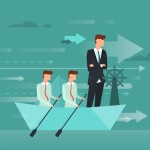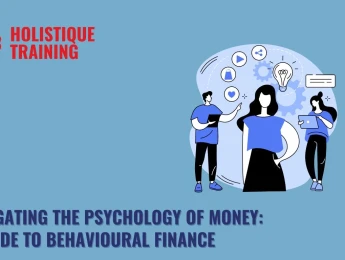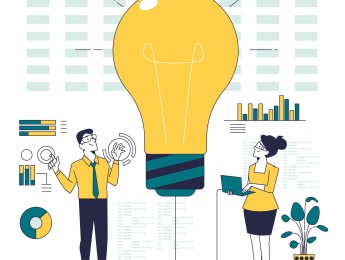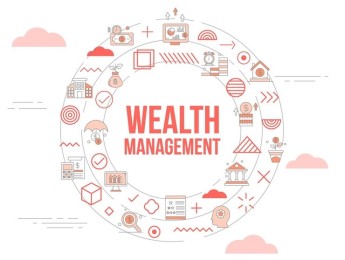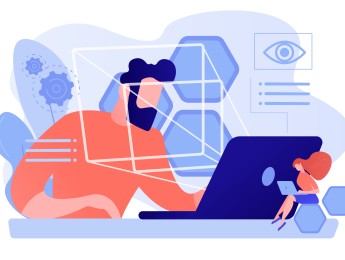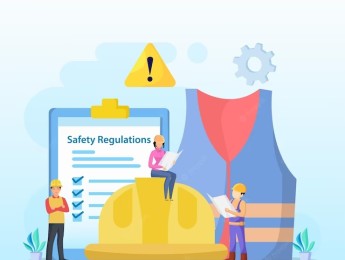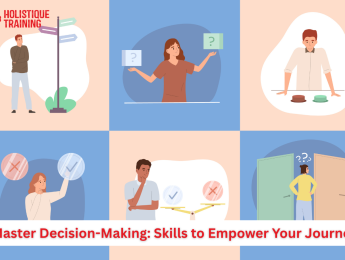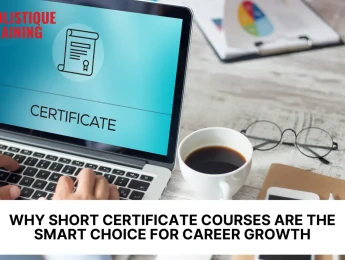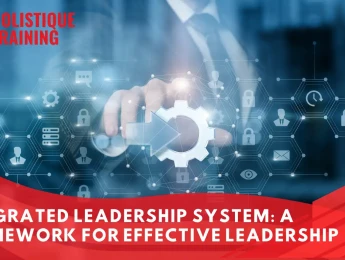Introduction
Problem-solving is a fundamental skill that empowers individuals to navigate life's complexities, both personally and professionally. Whether you're resolving conflicts, making critical decisions, or overcoming obstacles, effective problem-solving is key to achieving your goals. In this comprehensive guide, we will delve deeper into the importance of problem-solving, explore a step-by-step problem-solving process, discuss the significance of gathering information, and provide tips to enhance your problem-solving abilities. Additionally, we'll introduce three intriguing sections that shed light on related topics to broaden your understanding of this crucial skill.
What Is Problem-Solving?
At its core, problem-solving is a cognitive process through which individuals identify, analyse, and devise solutions for issues that hinder progress or create challenges. It is a skill that everyone encounters in their day-to-day lives and extends into various aspects of life, including personal and professional realms.
Why Is Having This Skill Important?
The importance of problem-solving cannot be overstated. It offers a plethora of benefits that contribute to personal growth and professional success. Here are some key advantages of being adept at problem-solving:
Enhancing Decision-Making
Effective problem-solving empowers individuals to make informed decisions across various facets of life. In personal matters, such as choosing the right healthcare plan for your family or deciding on an investment strategy, the ability to assess the available options and their potential outcomes is invaluable. In the professional realm, decision-making often involves higher stakes, where a single choice can impact an organisation's success or failure. Strong problem-solving skills ensure that the decisions you make are well-reasoned and aligned with your goals.
Boosting Critical Thinking
Problem-solving and critical thinking go hand in hand. Critical thinking is the process of objectively analysing information, evaluating its reliability, and drawing logical conclusions. Effective problem-solving encourages this critical thinking process. When faced with a challenge, individuals must assess the situation from multiple angles, question assumptions, and consider potential solutions. This critical mindset not only helps in problem-solving but also sharpens your ability to approach other aspects of life with a more discerning eye.
Increasing Efficiency
Efficiency is a prized asset, both personally and professionally. Problem-solving skills enable individuals to tackle issues efficiently, streamlining processes and optimising resource utilisation. For instance, in a work setting, a team that excels in problem-solving can identify bottlenecks in a project, find ways to eliminate them, and ensure smoother workflow. This not only saves time and resources but also contributes to the overall productivity of the team or organisation.
Improving Adaptability
The ability to adapt to changing circumstances and navigate unexpected challenges is crucial in today's dynamic world. Developing problem-solving skills fosters adaptability by equipping individuals with the tools to approach unforeseen situations with confidence. Whether it's a sudden change in market conditions, a shift in personal circumstances, or a global crisis, those adept at problem-solving are better prepared to assess the situation, identify viable solutions, and pivot as necessary.
Enhancing Collaboration
Collaborative problem-solving is a cornerstone of effective teamwork. When individuals within a group possess strong problem-solving skills, they are better equipped to work together harmoniously. A culture of collaborative problem-solving encourages open communication, mutual respect, and the pooling of diverse perspectives and ideas. This, in turn, fosters a positive work environment where innovation thrives. In a world where many endeavours require a collective effort, the ability to collaborate effectively is a significant advantage.
Achieving Personal Growth
Problem-solving is not just a tool for addressing external challenges; it is also a means of personal growth and development. When individuals confront and overcome obstacles, they build resilience and self-confidence. Each problem solved, whether big or small, becomes a stepping stone to greater self-efficacy. This sense of accomplishment and empowerment can have a profound impact on one's overall well-being and life satisfaction.
Contributing to Professional Success
In the professional sphere, strong problem-solving skills are highly sought after by employers. According to research, problem-solving abilities are among the top skills valued by employers across industries. Individuals who excel in this area are often seen as valuable assets to their organisations. They are entrusted with complex tasks, leadership roles, and decision-making responsibilities, which can pave the way for career advancement and success.
In summary, the importance of problem-solving skills transcends mere practicality; it is an invaluable asset that empowers individuals to make informed decisions, think critically, streamline processes, adapt to change, collaborate effectively, foster personal growth, and achieve professional success. Cultivating and refining these skills is a lifelong journey that yields benefits in every facet of life, enriching both personal experiences and career opportunities.
The Step-by-Step Process of Problem-Solving
Now that we have a solid understanding of the significance of problem-solving, let's dive into the step-by-step process of effective problem-solving. This structured approach ensures that you tackle problems systematically and increase your chances of finding successful solutions.
Step 1: Identify the Problem
The initial step in problem-solving is to clearly identify the problem or challenge at hand. This step is the foundation for the entire process, as a well-defined problem allows for a more focused and targeted approach to finding a solution. Consider asking yourself specific questions about the problem, such as what exactly is happening, when it started, and who is affected.
Step 2: Gather Information
Once the problem is identified, the next crucial step is to gather all relevant information about the situation. Effective problem-solving relies heavily on accurate information, so be diligent in seeking reliable sources and verifying the data you come across. The information-gathering phase might involve conducting research, talking to experts or stakeholders, or reviewing past experiences related to similar problems.
Step 3: Analyse the Information
With the necessary information collected, it's time to analyse it thoroughly. This step involves carefully examining the data, looking for patterns, and identifying potential causes of the problem. Pay attention to any underlying factors or trends that may contribute to the issue. Analysing the information allows you to gain deeper insights into the problem's root causes, making it easier to devise effective solutions.
Step 4: Generate Solutions
Armed with a comprehensive understanding of the problem, the next step is to brainstorm potential solutions. Encourage creativity and open-mindedness during this phase. Consider all possible approaches, even those that may seem unconventional at first. It's essential to create an environment where everyone's ideas are valued, and no suggestion is dismissed prematurely. This part of the process is about quantity, not quality. List as many solutions as possible before moving on to the next step.
Step 5: Evaluate Options
After generating a list of potential solutions, it's time to assess each option critically. Evaluate the pros and cons of each solution, considering factors such as feasibility, resources required, potential outcomes, and the impact on stakeholders. Use critical thinking to objectively analyse the advantages and disadvantages of each option. Some solutions may be more practical than others, and you may need to refine or combine ideas to create the most effective approach.
Step 6: Choose the Best Solution
Based on the evaluation, identify the most promising solution that aligns with your goals and addresses the root cause of the problem. Consider how the chosen solution fits into the bigger picture and how it complements your long-term objectives. Keep in mind that the best solution might not be the easiest one or the most popular. It's crucial to select the solution that offers the most significant potential for positive impact.
Step 7: Implement the Solution
With the chosen solution in hand, it's time to develop a detailed plan for implementation. Outline the necessary steps, allocate resources, and establish a timeline for execution. Clearly communicate the plan to all relevant stakeholders, ensuring everyone understands their roles and responsibilities. Effective communication is key to a successful implementation process.
Step 8: Monitor and Adjust
Once the solution is implemented, closely monitor its progress and effects. Be prepared to make adjustments as needed. Not all solutions will work perfectly from the outset, and unforeseen challenges may arise during implementation. Stay open to feedback from team members or other stakeholders and be willing to modify the approach if necessary. The monitoring phase is critical in ensuring the effectiveness of the solution and making any necessary refinements to achieve the desired outcomes.
Collaborative Problem-Solving in the Workplace
Collaborative problem-solving in the workplace is particularly valuable as it draws upon diverse perspectives and experiences. When working in a team, consider asking the following questions to facilitate effective problem-solving:
Collaborative Problem-Solving Questions |
1. What specific problem are we trying to solve? |
2. What information do we need to gather to understand the problem better? |
3. How does this problem affect different team members or departments? |
4. What potential solutions can we brainstorm collectively? |
5. How can we leverage each team member's strengths to address the problem? |
6. What challenges or roadblocks might we encounter during implementation? |
7. How will we measure the success of the solution? |
Collaborative problem-solving not only harnesses the collective knowledge of teams but also fosters a culture of teamwork, innovation, and continuous improvement.
The Importance of Gathering Information
Gathering information is a crucial aspect of problem-solving as it provides the foundation for informed decision-making. The right information can illuminate the underlying causes of the problem and reveal opportunities for innovative solutions. Additionally, thorough research and data analysis minimise the risk of adopting ineffective or counterproductive strategies.
How Do You Collect This Information?
There are several methods to collect information during the problem-solving process:
1. Research: Conduct in-depth research using reputable sources, studies, and expert opinions to gain a comprehensive understanding of the issue.
2. Surveys and Interviews: Utilise surveys or conduct interviews with stakeholders and relevant parties to gather diverse perspectives and insights.
3. Data Analysis: Examine available data and statistics related to the problem to identify patterns and trends.
4. Benchmarking:Compare your current situation with successful examples from similar scenarios to learn from best practices.
5. Observations: Directly observe the situation to gain firsthand insights and identify any hidden factors influencing the problem.
Becoming a Better Problem-Solver
Having explored the step-by-step process of problem-solving, let's now focus on how you can further enhance your problem-solving abilities and become even more proficient in tackling challenges:
1. Cultivate Curiosity
One of the fundamental drivers of effective problem-solving is curiosity. Embrace a curious mindset that encourages you to question the status quo, explore new ideas, and seek a deeper understanding of the issues you encounter. Curiosity fuels a hunger for knowledge and drives you to discover innovative solutions to complex problems.
2. Practise Active Listening
Problem-solving often involves collaboration and team efforts. Active listening is a critical skill during group discussions as it helps you understand various perspectives and gain insights from others' experiences. By actively listening to diverse viewpoints, you can create a more comprehensive and well-rounded approach to problem-solving.
3. Embrace Continuous Learning
The world is constantly evolving, and new challenges arise regularly. To stay ahead, make continuous learning a part of your problem-solving journey. Stay updated with the latest industry trends, research findings, and best practices. Enrol in courses, attend workshops, or participate in webinars to acquire new knowledge and skills that can be applied to problem-solving scenarios.
4. Develop Critical Thinking Skills
Critical thinking is the foundation of effective problem-solving. It involves analysing information objectively, evaluating its reliability, and drawing logical conclusions. Engage in activities that promote critical thinking, such as puzzles, riddles, and logical reasoning exercises. These activities help sharpen your cognitive abilities and enable you to approach problems with a more analytical mindset.
5. Stay Positive and Resilient
Problem-solving can be challenging, and setbacks are part of the process. Maintaining a positive outlook and cultivating resilience is vital to overcoming obstacles and staying motivated. Embrace failures as opportunities for learning and growth. A positive attitude empowers you to persevere, adapt, and find solutions even in the face of adversity.
6. Seek Feedback
Constructive feedback is invaluable in honing your problem-solving skills. Share your proposed solutions with colleagues or mentors and seek their input. Be open to receiving feedback, as it can provide valuable insights into areas of improvement or alternative perspectives you might not have considered. Embracing feedback helps you refine your problem-solving approach and fosters a culture of continuous improvement.
7. Reflect on Past Problem-Solving Experiences
Look back at previous problem-solving experiences and assess what worked well and what didn't. Reflecting on your past approaches allows you to identify patterns, strengths, and weaknesses in your problem-solving abilities. Use these insights to adapt and refine your problem-solving strategies moving forward.
8. Collaborate with Diverse Teams
Working with people from diverse backgrounds and expertise enriches the problem-solving process. Engage in cross-functional teams or seek input from individuals with varying skill sets. Embracing diverse perspectives fosters creativity, stimulates innovative thinking, and leads to more comprehensive solutions.
The Neuroscience of Problem-Solving
Understanding the brain's role in problem-solving can provide fascinating insights into how our cognitive processes work. Neuroscientists have long been intrigued by the mechanisms behind effective problem-solving. It turns out that our brains undergo several stages when confronted with a problem.
1. Recognition
The brain recognises a situation as a problem when it perceives a discrepancy between the current state and the desired state. This triggers the problem-solving process.
2. Information Gathering
As mentioned earlier, gathering information is a critical step in problem-solving. The brain actively seeks relevant data from memory and the environment, relying on our sensory inputs to provide valuable cues.
3. Pattern Recognition
Once information is gathered, the brain engages in pattern recognition. It looks for similarities between the current problem and past experiences, drawing upon stored knowledge to find potential solutions.
4. Idea Generation
Brainstorming, a key step in problem-solving, is facilitated by a brain region known as the prefrontal cortex. This area is responsible for creativity and innovation, enabling us to generate a wide range of ideas.
5. Evaluation
Another brain region, the anterior cingulate cortex, helps us evaluate the feasibility and potential effectiveness of each solution. It's like a built-in decision-making centre.
6. Implementation Planning
The brain develops a plan to execute the chosen solution. This phase involves setting goals, creating timelines, and coordinating various mental processes.
7. Execution
Finally, the motor cortex and other regions responsible for action come into play as we put our chosen solution into practice.
Learning more about the neuroscience of problem-solving not only enhances our understanding of the process but also provides insights into how we can optimise our brain's performance when facing complex challenges.
The Role of Artificial Intelligence in Problem-Solving
As technology continues to advance, the role of artificial intelligence (AI) in problem-solving has become increasingly prominent. AI systems, equipped with powerful algorithms and access to vast amounts of data, are changing the way we approach and solve complex problems. According to LinkedIn, data-driven problem-solving involves the exploration of novel data sources and the acquisition of fresh data to develop reusable and automated approaches for extracting valuable insights. That being said, here are some other intriguing aspects of AI's impact on problem-solving:
Data Processing
AI can rapidly process and analyse enormous datasets, uncovering patterns and insights that may not be immediately apparent to humans. This ability to sift through vast amounts of information can significantly enhance the information-gathering phase of problem-solving.
Predictive Analytics
Machine learning algorithms in AI can make predictions based on historical data, helping organisations anticipate and proactively address problems before they escalate.
Decision Support
AI systems can provide decision-makers with valuable recommendations by evaluating the potential outcomes of different solutions. This assists in the evaluation and selection of the best course of action.
Automation
AI-powered robots and systems are capable of executing solutions autonomously, particularly in industries like manufacturing and logistics. This reduces the need for human intervention in routine problem-solving tasks.
Creativity Enhancement
Some AI algorithms are designed to enhance human creativity. They can suggest novel ideas or combinations of solutions that humans might not have considered, fostering innovation in problem-solving.
While AI offers significant advantages in problem-solving, it's important to strike a balance between machine intelligence and human judgement. Collaborative problem-solving, where AI assists humans in the process, holds great promise for the future.
Problem-Solving in Everyday Life
Problem-solving isn't confined to the workplace or academic settings; it's an integral part of our daily lives. In fact, we engage in problem-solving without even realising it. Here are a few instances where problem-solving plays a role in our everyday activities:
1. Cooking: Planning and preparing a meal involves solving various problems, from selecting ingredients to managing cooking times and temperatures.
2. Home Repairs: When something breaks or malfunctions at home, you must identify the issue, gather information about how to fix it, and then implement a solution—classic problem-solving!
3. Time Management: Balancing work, family, and personal life requires effective time management, which involves identifying priorities, allocating time to tasks, and adapting to unexpected challenges.
4. Budgeting: Managing your finances involves solving problems related to income, expenses, and savings. You must make decisions that align with your financial goals.
5. Social Interactions: Navigating social situations often requires problem-solving skills. You might need to resolve conflicts, make decisions as a group, or find creative solutions to keep relationships harmonious.
Understanding that problem-solving is an inherent part of our daily existence underscores its importance beyond professional contexts. Developing and honing problem-solving skills can lead to more effective and satisfying daily experiences.
Conclusion
Problem-solving is an invaluable skill that empowers individuals to navigate life's complexities and achieve success. The process involves identifying issues, gathering information, brainstorming solutions, and implementing effective strategies. Collaborative problem-solving, especially in the workplace, harnesses the collective knowledge of teams to tackle challenges comprehensively. Central to this entire process is the importance of gathering information, which equips decision-makers with the insights necessary to devise well-informed and impactful solutions.
As you embark on your quest to become a more adept problem solver and foster innovation within your team, consider joining our exclusive course, 'Leading Innovation in High Impact Teams.' Through this transformative course, you'll gain invaluable expertise and strategies from industry experts to elevate your problem-solving capabilities and inspire your team to reach new heights in creativity and collaborative problem-solving. Don't miss this opportunity to unlock your team's full potential and make a lasting impact in the dynamic world of problem-solving and innovation.




